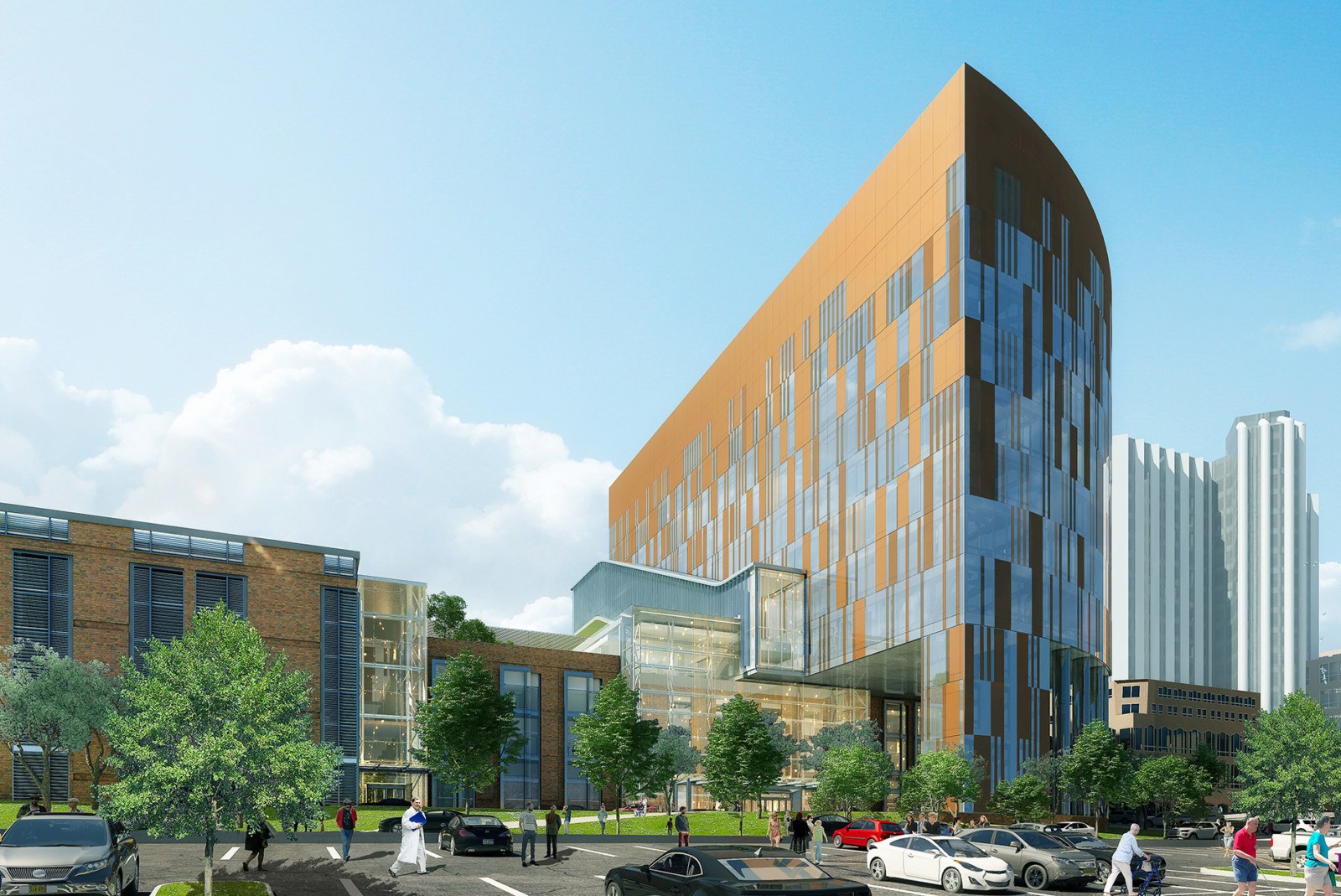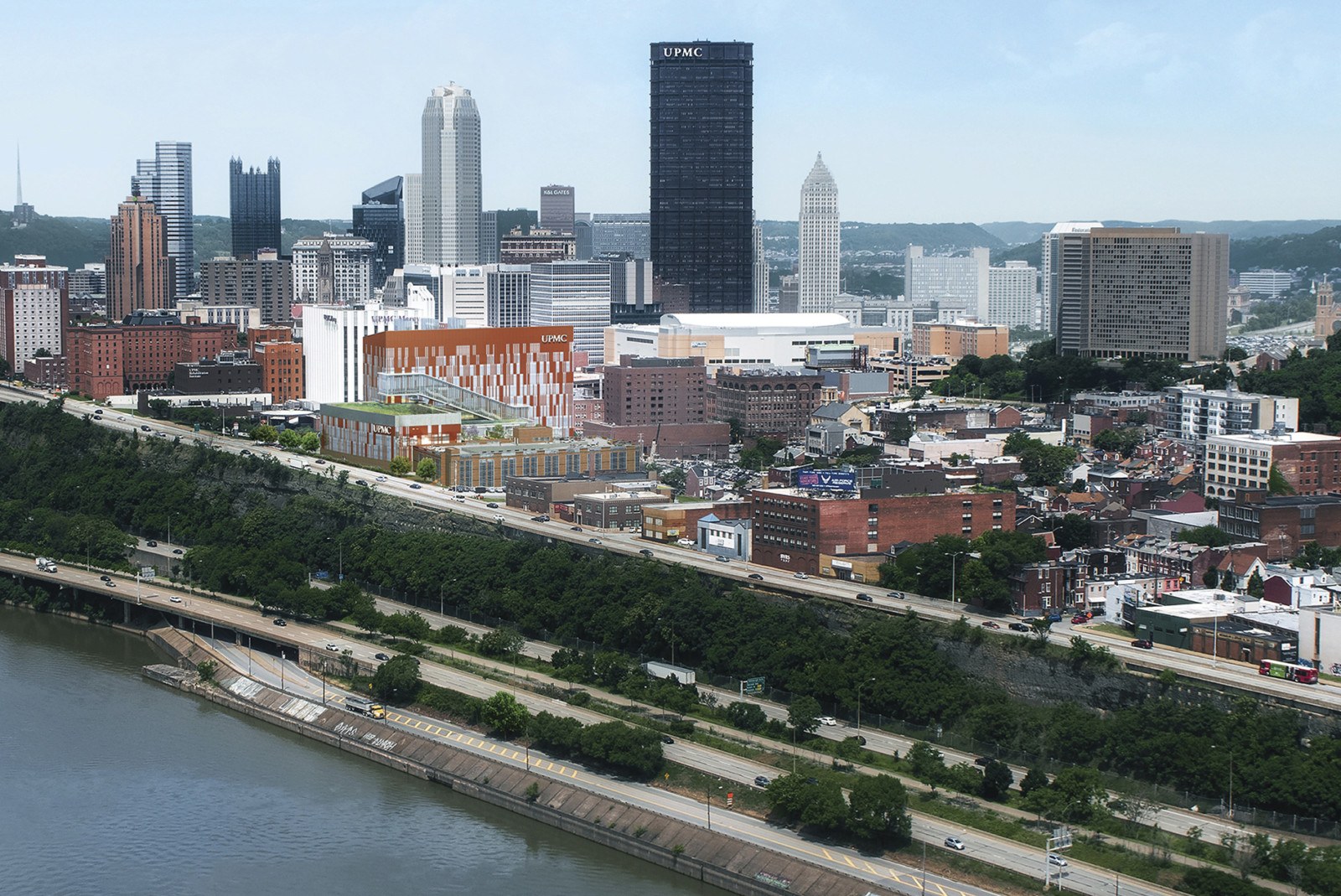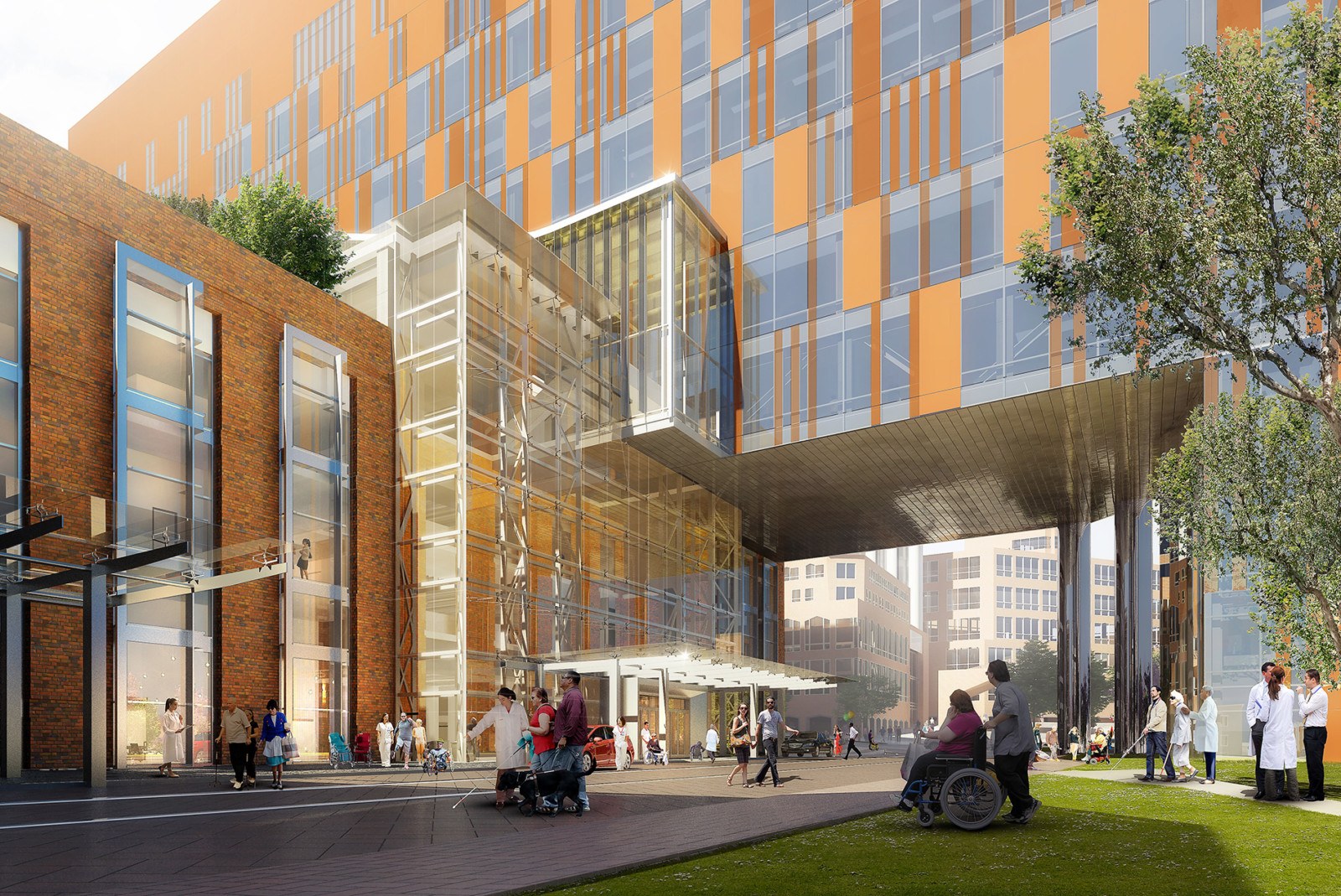Scheduled to open in 2021, the 410,000-sq.-ft. building will provide nine stories of clinical and research space as part of UPMC’s $2 billion investment in three new technology-enhanced, specialty hospitals.
“UPMC is known worldwide for thinking unconventionally and pushing the limits for the best possible outcomes for our patients,” said Jeffrey A. Romoff, president and chief executive officer, UPMC. “Our vision for health care of the future drew us to invite the most talented architects to create iconic buildings, which will be the expression of our cutting-edge, translational science and the creation of treatments and cures for the most devastating diseases that our patients experience in cancer, heart disease, transplantation, diseases of aging, vision restoration and rehabilitation.”
“These hospitals within hospitals will be part of the fabric and landscape of Pittsburgh and assets to our communities well into the future,” said Leslie C. Davis, senior vice president of UPMC and executive vice president and chief operating officer of the Health Services Division. “We have a rare opportunity to plan spaces that encourage health, compassion and healing. The firms we selected have risen to the challenge we put forth—to create positive and welcoming environments for the thousands of patients, families and employees who will travel to these facilities for care and for work every day.”
“This is where, in partnership with the University of Pittsburgh, we will take the research advances that are in the laboratory today directly and swiftly to our patients to provide highly personalized, effective and compassionate care,” said Steven D. Shapiro, M.D., executive vice president and chief medical and scientific officer, UPMC. “We are creating an environment where bench-to-bedside treatments will be expedited, and we know that doing this will radically change health care as we know it.”
“Conventional thinking can’t save health care,” Romoff added. “Just because it’s never been done doesn’t mean UPMC can’t do it.”
UPMC Vison and Rehabilitation Hospital at UPMC Mercy
Based on an international architectural design competition, UPMC selected HOK to design the 410,000-sq.-ft. Vision and Rehabilitation Hospital at UPMC Mercy. Groundbreaking for the nine-story building will be in early spring 2019, and it is scheduled to open in 2021.
The UPMC Vision and Rehabilitation Hospital is designed for the many patients in the Pittsburgh region and beyond who need physical rehabilitation and those who have diseases of the eye or vision impairment. The space is carefully planned to welcome all patients and visitors with the thoughtful placement of physical cues that will help navigate from the point of entry throughout the hospital.
As a new Pittsburgh landmark located on a prominent site along the Boulevard of the Allies, this state-of-the-art facility will position UPMC at the global forefront of rehabilitation and ophthalmic research and care. Clinicians, researchers, educators and industry partners will come together here to accelerate the process of translating research into innovative treatments for patients.
HOK’s team is collaborating on the design of the building with noted French physician-scientist José-Alain Sahel, M.D., chair of the University of Pittsburgh School of Medicine Department of Ophthalmology, and renowned rehabilitation physician Gwendolyn Sowa, M.D., Ph.D., chair of Physical Medicine & Rehabilitation at Pitt and director of the UPMC Rehabilitation Institute.
Chris Downey, AIA, who became one of the world’s few blind architects after losing all sight in 2008, is advising the team on how to design the space to best support the visually impaired. Enriching environments will help patients navigate the building, including lighting related to contrast and brightness, materials and textures that aid people with canes and sound as a wayfinding tool.
The materials used for the building facade—an energy-efficient patterned glass, warm terra-cotta and brick—respect the architecture of Mercy’s campus and the neighborhood. The landscape acts as an extension of the existing hospital. Visitors are greeted by clear views into the building, signaling that this is a destination for healing, an incubator for medical advancements and a hub for biomedical research.
The building will include an innovative, low-vision, clinic-gym hybrid, which anchors the program with an interactive healing center, exam rooms, therapy stations and a central gym, as well as a fully mocked-up apartment and street lab where patients can go through simulations that teach them critical life skills. Training ramps and stairs in a healing garden on the roof terrace give patients a safe environment in which to prepare for real-life experiences.


